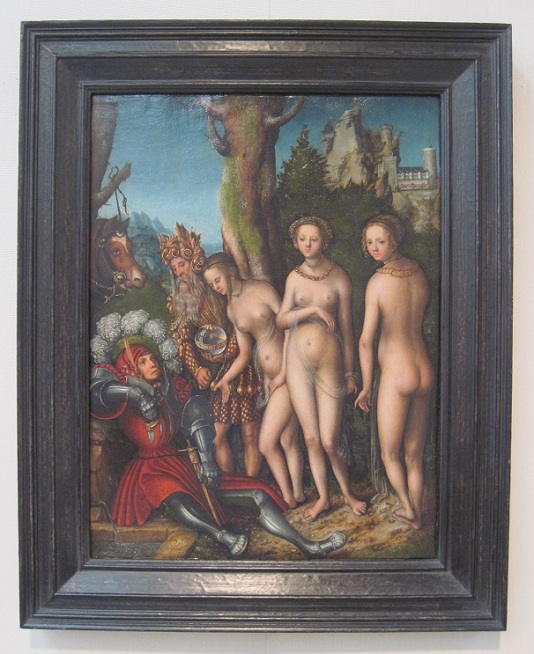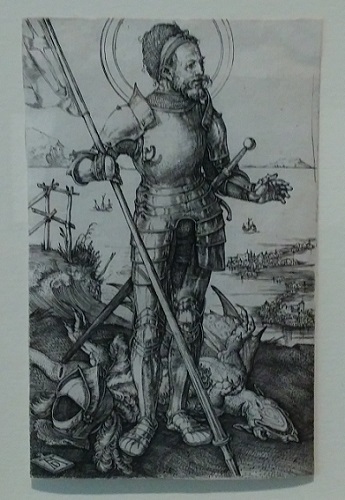Subject: Ritter knight
Culture: Imperial German / Austrian
Setting: French, Turkish wars, Europe early-mid 15thc
Dallas Museum of Art > Saints and Monsters *
"Albrecht Dürer German, 1471-1528 St. George on Foot 1504-1505 Engraving ...
St. George was an early Christian martyr most famed for his slaying of a dragon.
In this tale of medieval gallantry and Christian morality, a princess is sacrificed to satiate the evil dragon, and the noble George,
clad in a full suit of armor, comes to her rescue. His reward was the conversion of the surrounding villages to Christianity.
"In this engraving, the victorious George holds a banner with a cross inside a circle, the emblem for the Order of St. George, which was later established in his honour. It was widely believed in Europe through the 17th century that dragons existed, and therefore Albrecht Dürer is representing what was perceived as a real threat of evil. Here the dragon looks especially monstrous with its sinister frown,
sharp teeth, and long talons, while George looks heroic with his gleaming, undamaged suit of armor."
* Kimbell Art Museum
"LUCAS CRANACH THE ELDER German, 1472-1553
The Judgment of Paris c. 1512-14 Oil on panel ...
This is the first of Cranach's several versions of The Judgment of Paris. According to Greek mythology, the goddess Eris (Discord) tossed an apple labeled 'to the fairest' among the Olympian gods. Jupiter sent the messenger-god Mercury to tell Paris, prince of Troy, to award the prize. The three goddesses who claimed the apple offered bribes. Juno promised wealth and power, Minerva military prowess, and Venus the love of the most beautiful woman on earth. Paris's choice of Venus, and his abduction of the most beautiful woman -- the Spartan queen, Helen -- let to the Trojan War.

